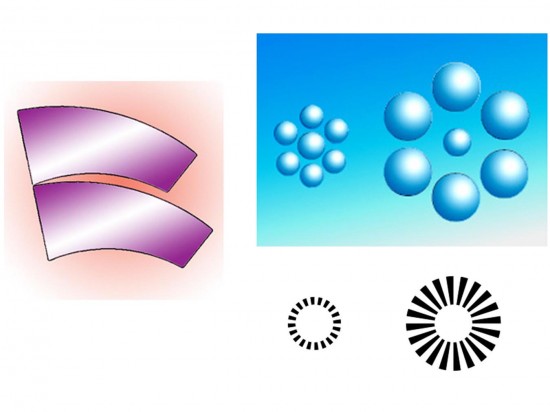The butterflies appear to circulate in time to the heartbeat of Dionysius (the ancient Greek God of wine), yet they never change position. The movement is an illusion. Only the tones and colours are changing, and movement appears as light butterflies on a dark ground change to darker ones on a lighter ground, and as light edges of the butterflies change to dark, and vice versa. You may also see similarly evoked movement on the chest and stomach of Dionysius, in time with his breathing.
Compression for Flash has rather trashed animation quality. If possible, view Drunken Dionysius as a
Quicktime Movie
Here’s a related illusion, a new version of the Duck/Rabbit illusion.
The yellow central panel appears to move, but remains objectively quite stationary. The edges don’t move either, all that changes is that black edges switch to white, and vice versa.
These effects are related to those in the Bouncing Brains Illusion, an entry by Thorsten Hansen and colleagues (University of Giessen, Germany) for the Best Visual Illusion of the Year contest 2007.
They are also related to the peripheral drift illusion. A beautiful new example of that illusion by Kaia Nao (aka wildlife artist Joe Hautman) was one of the final 10 entries in this year’s Best Visual Illusion of the Year contest (the whole contest is not to be missed!).
All these illusions are thought to arise in peripheral vision because of differences in the speed of brain processing of the light and dark edges of the elements in these patterns. The ones presenting most contrast are processed quickest. Because the timing differences and their direction across similarly orientated pattern elements are syncronised, they are picked up by movement detectors in peripheral vision, and interpreted as movement of whole blocks of elements. For another example of apparent movement in a completely static image, see our earlier Ocean Wave Illusion.
If you devour scholarly research articles, here’s one on what may be going on in these illusions in more detail.

